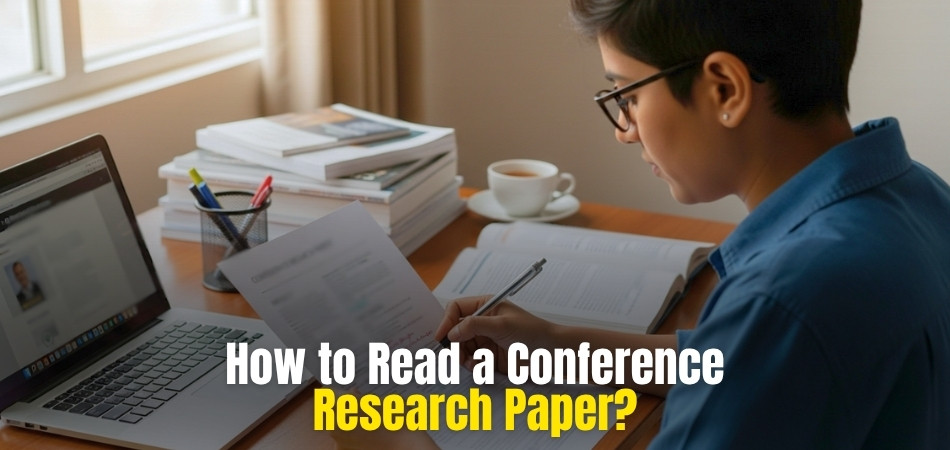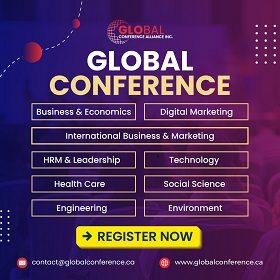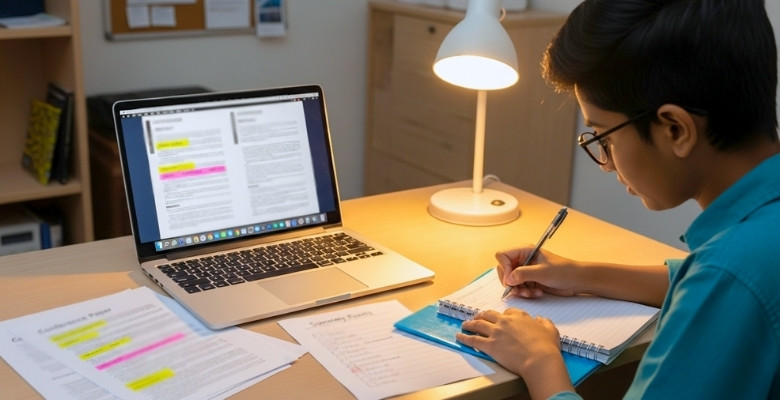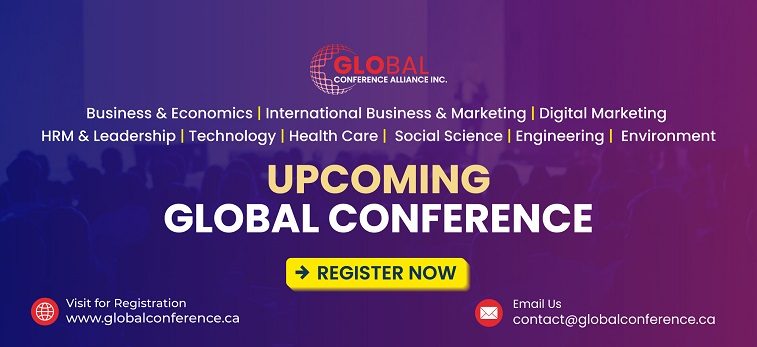Conference research papers can seem tricky at first, filled with many details and special terms. If you have ever wondered how to make sense of these papers or felt unsure where to start, you might be asking yourself, “How to read a conference research paper?” This question is common because these papers follow a certain style and structure that can be confusing without a clear plan.
To read a conference research paper well, begin with the title to get the topic. Check the authors, then read the abstract for a summary. Use headings to find important sections, and take your time understanding diagrams and the conclusion. Don’t rush—read parts more than once if needed to fully grasp the information.
Are you curious about how to follow each step smoothly and not miss important points? If so, this article will give you everything you need to know about reading conference research papers.
How to Read a Conference Research Paper?
Reading a conference research paper might seem confusing at first, but it becomes easier once you know how to go about it. You don’t need to understand everything at once. Take it step by step. This guide will help you with that, so keep reading for the full tips and tricks.

Start With the Title
The title tells you what the paper is about. Read it slowly and try to guess what the paper will discuss. If there are any words you don’t understand, look them up quickly. A good title gives clues about the topic, method, or result. Don’t skip the title—it sets the mood for the rest.
Check the Authors
Look at who wrote the paper. Sometimes their names and where they work are written at the top. Many well-known researchers often present their work at global events like conferences in USA, so noticing their names can tell you a lot. If many authors are listed, it means more people worked together on it. That usually means the paper is well-researched.
Read the Abstract
The abstract is a small summary. It tells you what the paper is about in a short paragraph. You’ll get an idea of the topic, how the research was done, and what they found. If you understand the abstract, the rest of the paper becomes easier. Don’t skip it—it’s super helpful.
Look at the Headings
Most papers have headings like Introduction, Method, Results, and Conclusion. These break the paper into parts. Headings help you find the information you need faster. You don’t always have to read every word—just go to the part that interests you. It’s like using a map while reading.
Focus on the Introduction
The introduction explains why the research was done. It gives some background and says what the paper is trying to find or prove. If this part feels hard, don’t worry—just try to get the basic idea. Read it twice if you need to. It’s okay to take your time here.
Understand the Diagrams
Research papers often have charts, graphs, or tables. Don’t skip them—they can explain things better than words. Look at the labels, read the titles, and try to understand what the picture is saying. These can help you get the results without reading all the details. Pictures speak louder than words sometimes.
Read the Conclusion
The conclusion tells you what the researchers found in the end. It sums up the whole paper in just a few lines. You’ll find out if their guess was right or wrong. This part is usually short and easy to understand. It’s one of the most important parts to read.
Take Your Time
Don’t rush while reading. You don’t need to understand everything the first time. Read small parts, take breaks, and come back to it. It’s okay to read it more than once. The more you read, the more you’ll get it.
Why Are Conference Papers Important in Academia?
Conference papers might seem just like regular reports, but they play a bigger role in sharing new ideas and discoveries. They help people in different fields learn from each other. There’s more to understand about why these papers matter. Look below to know more details about it:
Sharing New Ideas
Sharing new findings at conferences allows researchers to present ideas sooner than traditional publishing. This early exposure helps the academic community learn about fresh insights and move forward more quickly. It’s a way to spark collaboration and speed up progress in the field.
Getting Feedback
When researchers present their papers, they get comments and questions from others. This feedback helps them see what might be missing or unclear. It also helps improve their work before it gets published elsewhere. Hearing different opinions is very useful.
Building Connections
These papers are often presented at meetings where people with similar interests gather. It’s a chance to meet others who study the same things. These connections can lead to working together on future projects. Meeting new people helps ideas grow.
Showing Progress
Conference papers show what researchers are working on right now. They tell others about the latest progress and experiments. This keeps everyone updated on what’s happening in their field. It’s like a progress report for the whole community.
Learning About Trends
By reading many conference papers, people can see new trends or popular topics. This helps them know what’s important or interesting at the moment. It guides future research and study. Keeping up with trends means staying in the loop.
Fast Sharing of Research
Conference papers share research faster than books or big reports. This speed helps new ideas reach others sooner. It’s useful when the research can help solve problems quickly. Fast sharing makes science and learning move ahead.
Typical Challenges You Can Face When Reading Conference Papers
Sometimes, reading conference papers can be tricky because the information may seem unclear or hard to understand. Many people face common challenges when going through these papers. Continue reading to find what these difficulties are and how you can overcome them.
Hard Vocabulary
Many conference papers use words that are new or complicated. This can make it hard to understand what the paper is saying. You might need to look up some words to get the meaning. Don’t get discouraged—this happens to everyone.
Complex Sentences
Sometimes, sentences in research papers are very long and packed with information. This can make it difficult to know what the main point is. Try breaking the sentence into smaller parts to understand it better. Reading slowly can help a lot here.
Missing Background Info
Papers often assume you already know some things about the topic. If you don’t have that background knowledge, it can be confusing. You might need to read some simpler articles first. Building up what you know helps make sense of harder papers.
Difficult Data and Graphs
Graphs, charts, and tables can be tough to understand at first glance. They often have a lot of numbers or details that seem overwhelming. Take your time looking at them and read the labels carefully. Sometimes, pictures explain things more clearly than words.
Skipping Important Parts
It’s easy to miss important details if you skim through the paper too quickly. Some sections might seem boring, but actually have key information. Try to read carefully or highlight parts that seem important. Going slow can help you catch everything.
Too Much Information
Conference papers sometimes have a lot of details all at once. This can make it hard to figure out what really matters. Focus on the main ideas first, then go back for the smaller details. Taking notes can help organize your thoughts.
Different Writing Styles
Not every paper is written the same way. Some writers explain things clearly, while others might be harder to follow. This can make reading feel confusing or frustrating. Don’t give up—practice helps you get used to different styles.
How to Identify Key Contributions in a Conference Paper?
Finding the most important parts of a conference paper can be tricky. Not every detail matters the same, and some ideas stand out more than others. Knowing what to look for helps you understand the paper better. Here is how to spot those key points.
Focus on the Abstract
The abstract is a short summary at the start of the paper. It usually tells you the main points the authors want to share. For example, if you want to write a good abstract for a scientific paper, it should clearly highlight the key ideas. This is a great place to start before reading the whole paper.
Look for the Introduction
The introduction explains why the paper was written and what problem it tries to solve. It often highlights what’s new or different in the research. Pay close attention here because authors usually mention their main contributions. This part sets the stage for everything else.
Check the Problem Statement
A clear problem statement shows what question the paper is trying to answer. It helps you understand the focus of the research. The solution or findings related to this problem are often the key contributions. Look for sentences that explain the problem clearly.
Review the Results Section
Results sections highlight what researchers found through their study. This part gives clear answers to the research question. Key findings or breakthroughs are often shared here, helping readers see the paper’s contribution to the field.
Notice the Conclusion
The conclusion wraps up the paper by repeating the main points and contributions. It often explains why the work matters. Reading the conclusion gives you a clear view of what the authors think is most important. It’s a good place to double-check your understanding.
Watch for Highlighted Points
Sometimes, papers list their key contributions clearly, using bullet points or separate sections. These make it easy to spot the most important ideas quickly. If you see a part called “Contributions” or “Our Work,” focus there. It saves time and keeps things simple.
Best Way to Summarize a Conference Paper
Summarizing a conference paper can feel tricky if you don’t know where to start. It’s not just about repeating everything, but picking out the most important parts. A good summary helps you remember the key points clearly. To learn easy steps for creating a powerful summary, continue reading. a strong summary.
Read the Entire Paper
Before you start writing, read the whole paper carefully. This helps you understand the main ideas and details. Don’t rush through it—take your time to get the full picture. Reading it once might not be enough, so read it twice if needed.
Focus on the Abstract
The abstract gives a quick overview of the paper. It usually mentions the main topic, method, and findings. Use the abstract as a guide to know what to include in your summary. This saves time and keeps your summary focused.
Pick Important Points
Look for the key ideas the authors want to share. These are usually found in the introduction, results, and conclusion sections. Avoid minor details or extra information that doesn’t change the main message. Your summary should be clear and to the point.
Use Your Own Words
Try to write the summary using your own words instead of copying the paper. This shows you really understand the content. It also makes the summary easier to read and more interesting. Don’t worry about using fancy words—simple language works best.
Keep It Short
A summary should be shorter than the original paper. Focus on just the main points without going into too much detail. Aim for a few sentences or a short paragraph. Being brief helps others quickly understand the paper’s message.
Check for Accuracy
After writing, read your summary to make sure it matches the original paper’s meaning. Check if you missed any important points or added something wrong. Correct any mistakes before finishing. Accuracy is very important in a good summary.
Practice Regularly
The more you practice summarizing, the better you get. Try summarizing different papers or articles to improve your skills. Over time, you will find it easier to pick out key ideas quickly. Practice makes summarizing faster and more natural.
How to Follow Up After Reading a Conference Research Paper?
After finishing a conference research paper, it’s natural to wonder what to do next. There are many ways to keep learning and connect with others interested in the same topic. Taking the right steps after reading can help you get more out of the paper. Read on to find out useful ideas for what comes next.
Explore Cited Works
One great way to learn more is by checking the papers and books the authors mention. These cited works give background and other important studies related to the topic. Reading some of these can help you understand the subject better. It also shows how the current paper fits into a bigger picture of research.
Search Related Papers
Looking for other papers on the same topic can give you a wider view. You might find different approaches or new findings that add to what you just read. Searching online databases or libraries is an easy way to find related studies. This helps you build a stronger understanding and see different ideas.
Contact the Authors
If something in the paper is unclear or you want to learn more, try reaching out to the authors. Many researchers are happy to answer questions or discuss their work. You can often find their email or contact info in the paper itself. Sending a polite message can lead to helpful conversations.
Share Your Thoughts
Talking about what you learned with others can deepen your understanding. Join discussions online or in study groups to hear different opinions. Sharing ideas also helps you remember important points better. It’s a good way to stay connected with the research community.
Take Notes and Summarize
Writing a summary of the paper helps you keep track of what you read. Notes can include the main points, questions you have, or ideas for future study. This makes it easier to review later or share with others. Organizing your thoughts in writing improves your grasp of the subject.
Share and Get Feedback
After thoroughly reading a conference paper, researchers often look for ways to engage with the academic community. One effective method is to submit conference paper to ResearchGate, which helps share your work widely and receive valuable feedback. This can lead to new ideas and improve your understanding of the topic by hearing from others.
Tips to Apply Insights From Conference Papers to Your Own Research or Work
Reading a conference paper often brings up ideas you might want to apply in your own work. Finding simple ways to connect those insights to your research can make a big difference. Well-applied knowledge can strengthen your project and add new depth. Here are a few practical tips to help you get started.
Understand the Main Idea
Start by making sure you clearly understand the key points of the paper. Focus on what the authors discovered or suggested. This will help you see what parts fit best with your own work. If you don’t fully get something, go back and read those parts again.
Compare with Your Work
Look at how the paper’s ideas match or differ from what you are doing. This helps you find new angles or better ways to solve problems. Sometimes, small changes inspired by a paper can improve your results. Don’t be afraid to think about ways to mix ideas.
Try New Methods
Some conference papers explain new methods or tools that you might want to test. Using different techniques can give you fresh results or help with tough tasks. Before jumping in, consider if the method fits your goals and resources. Testing new approaches can open up new possibilities.
Take Notes Carefully
Write down useful points and examples from the paper as you read. These notes will help you remember important details later. You can also add your thoughts on how to use each idea. Keeping organized notes makes applying insights much easier.
Discuss With Peers
Talking about the paper with others can give you more ideas on how to apply it. Different opinions help you see things you might have missed. Group discussions or study groups are great places for this kind of exchange. Sharing your thoughts also helps you learn better.
Connect to Real Events
If you attend conferences or workshops, you get chances to see these ideas in action. For example, once your registration is complete, you’ll start to experience the benefits of attending an eCommerce conference in the USA, from expert talks to networking chances. These events give extra insights that go beyond reading papers.
Reflect and Adjust
After trying new ideas, take time to think about what worked and what didn’t. This helps you improve your approach over time. Learning from both success and failure is key to growing in research. Keep an open mind and be ready to make changes as needed.
Commonly Asked Questions
Conference research papers can sometimes feel tricky to understand at first. Many people have questions about how to make sense of them and get the most out of their reading. Below are some common questions and helpful answers to guide you through the process smoothly and confidently.
How to Choose Which Conference Papers to Read?
It’s best to pick papers that match your interests or research area. Look for recent papers or those written by well-known authors in your field. Checking the paper’s abstract first can help you decide if it’s worth spending time on.
What Should I Look for in the Method Section?
Focus on how the researchers carried out their study. This includes tools, materials, and steps they followed. Understanding the method helps you judge if the results are reliable and if you could use similar steps in your own work.
Can I Use Online Tools to Help Read Papers?
Absolutely! Tools like highlighting software, annotation apps, and reference managers make reading easier. Some websites even explain tough terms or summarize papers. Using these tools can speed up your understanding and keep your notes organized.
How to Manage Time When Reading Many Papers?
Set specific goals for each reading session, like focusing on the introduction or results. Break your reading into smaller parts and take short breaks to avoid feeling overwhelmed. Prioritize papers that seem most useful for your work or learning.
When Is It Okay to Skip Parts of a Paper?
If some sections are too technical or don’t relate to your purpose, it’s fine to skip or skim them. For example, you might skip detailed math if you only need to understand the main idea. Focus on parts that help you the most.
How to Handle Confusing Technical Terms?
When you meet new terms, try to find simple explanations online or in dictionaries. You can also write down these words and revisit them later. Over time, learning new terms will become easier as you get more familiar with the topic.
Should I Read a Paper in One Sitting or Multiple Times?
It’s usually better to read a paper in parts rather than all at once. Multiple readings help you catch details you missed the first time. Start with a quick scan, then go back for deeper reading where needed. This way, understanding builds gradually.
How Can I Avoid Getting Distracted While Reading?
Find a quiet and comfortable spot. Turn off notifications on devices. Set specific reading goals for each session. Taking regular breaks keeps your focus sharp and prevents burnout.
Should I Read Papers in My Own Language or in English?
If English is not your first language, reading papers in your own language might help first. But since most research is in English, practicing reading in English improves skills and access to more resources over time.
How Can I Stay Motivated When Reading Long Papers?
Set small goals like finishing one section before a break. Reward yourself after completing parts. Try to remember why you are reading the paper and how it helps your research or learning. Keeping the purpose in mind keeps motivation strong.
Final Thoughts
Diving into a conference research paper might feel tricky at first, but with the right approach, it becomes a lot clearer and even exciting. Knowing where to start and how to break down the information makes the whole process smoother and less overwhelming.
If you’ve ever wondered how to read a conference research paper, remember that it’s okay to take your time and revisit parts that seem tough. Focus on the big ideas first, use notes to stay organized, and don’t hesitate to ask questions or discuss what you’ve learned with others.
By practicing these steps, reading research papers will soon feel natural and useful. You’ll find yourself gaining fresh insights and ideas to improve your own work. Keep exploring and enjoy the learning process!








